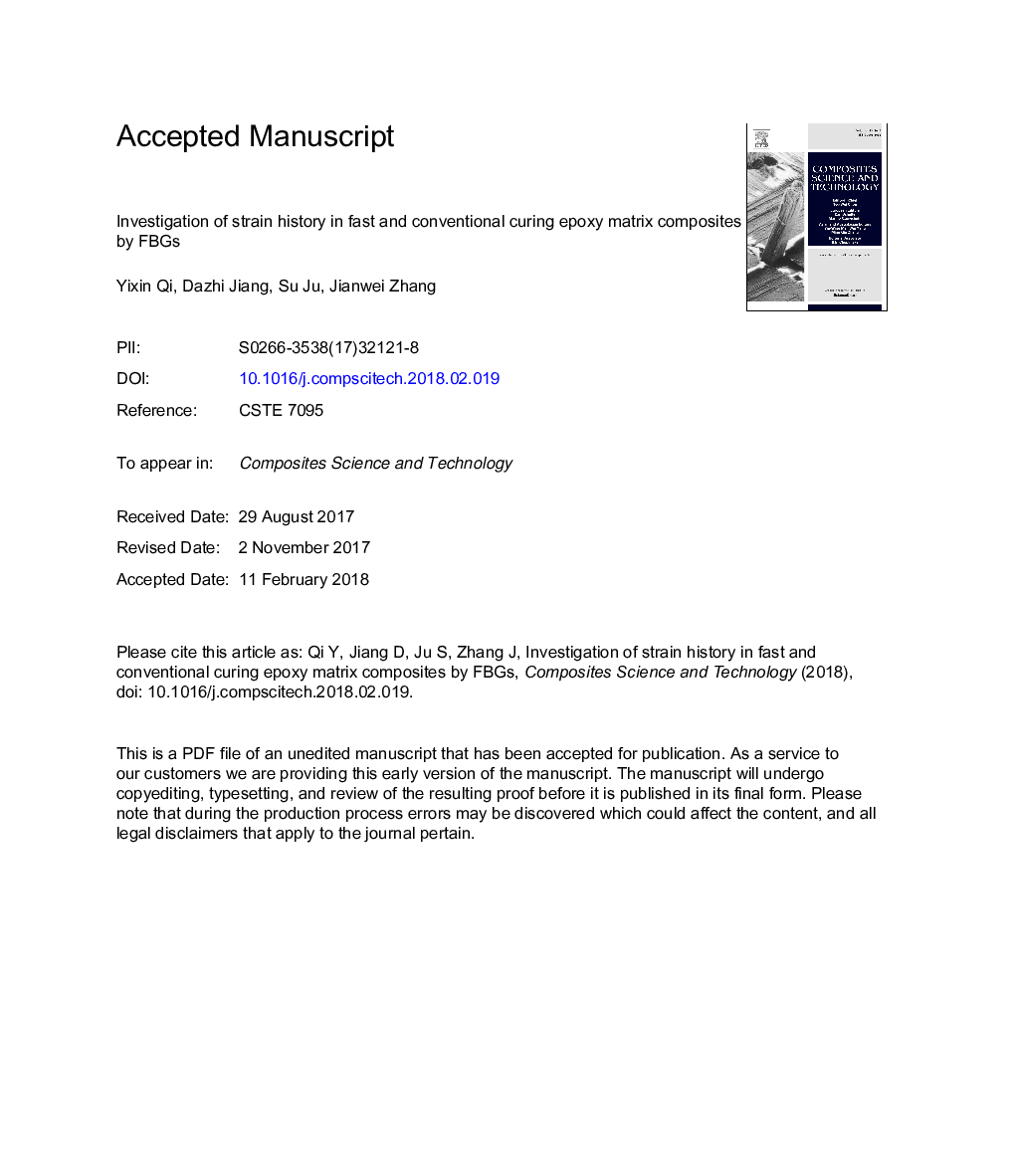| Article ID | Journal | Published Year | Pages | File Type |
|---|---|---|---|---|
| 7214523 | Composites Science and Technology | 2018 | 23 Pages |
Abstract
A comprehensive understanding of strain history in resin matrix composite, which is caused by variability of thermo-mechanical properties of the resin during composite processing, is essential to allow better design and control of properties of the resin matrix composite. In this paper, to know strain history of fast curing epoxy matrix composite and differences of strain history between fast and conventional curing epoxy matrix composites well, temperature and strain history at different locations in ten-ply unidirectional carbon-fiber fabrics reinforced the fast and conventional curing epoxy matrix composite laminates manufactured by wet lay-up method were measured by fiber Bragg grating (FBG) sensors. Results shown that the peak temperature due to curing exothermal reaction was 133.7â¯Â°C in both the 1st ply and the 5th ply in the fast curing composite when cure temperature profile settled at 80â¯Â°C, which was 27.4â¯Â°C higher than that in the conventional curing composite. Cure residual strain in the 1st ply and the 5th ply in the fast curing composite were â5183.3 με and â4074.7 με, respectively; while they were â2975.9 με and â2660.8 με in the conventional curing composite. The related properties of rheology and cure kinetics of the epoxy resin were thus given in advance.
Related Topics
Physical Sciences and Engineering
Engineering
Engineering (General)
Authors
Yixin Qi, Dazhi Jiang, Su Ju, Jianwei Zhang,
